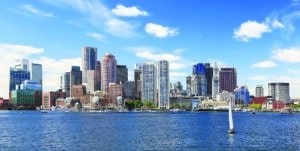Landlords of second-tier office buildings in Boston have begun reducing asking rents amid a pandemic-induced decline in occupancy, and a brokerage report predicts their class A counterparts are likely to follow suit this year.
Noting the “extremely tumultuous year” for downtown Boston commercial real estate, tenant representation brokerage CRESA said the market is likely to stabilize as developers shift toward lab-ready projects to meet the life science industry’s relentless expansion.
“Class A landlords will likely follow this trend in 2021 due to high sublease inventory, shrinking office space requirements, and the arrival of new development inventory,” Boston-based Cresa predicts in its market insights report.
In the meantime, office tenants looking for quick occupancy and rent relief have a wide range of options that were unavailable or unaffordable just a year ago.
Overall, downtown office vacancy rates have increased to 9.8 percent and the availability rate – including sublease space – has reached 13.2 percent. At the same time, nearly 8.5 million square feet of projects are under construction, including both office and lab-ready buildings.
CRESA is tracking 3.1 million square feet of sublease space in the Boston central business district, nearly half stemming from retrenchment among tech companies. After rising 200 percent from April through November, sublease listings have started to level off.
Class B landlords have been the first to adjust their prices, with asking class B rents now ranging from just under $50 per square foot in the Seaport and South Station submarkets to $59.97 in Back Bay.




 |
| 




